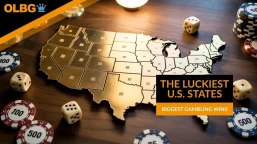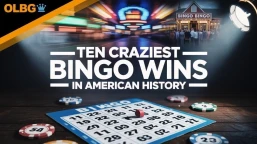
With 30+ years in racing and betting, Darren helps punters develop their skills. As OLBG’s Tipster boss and expert guide, he turns insight into winning strategy.
A bit like the Holy Grail or the Yeti.
I have not the slightest idea where it is - but it must be out there somewhere.
What must?
The thin line between trading and covering bets or greening up.
You can read more about trading opportunities here.
Trading early or late
To explain what I mean, let's look at horse racing first.

You back 100 horses £1 at 5.00.
There are three possibilities with varying degrees of each.
A winning system, a losing system, and one virtually breaking even.
Should 22 horses win your return is £110 equating to a profit of 10 pts.
That is a reasonable enough profit.
Personally, if I was confident enough that a similar margin could be maintained there may be no reason to mess with it.
Should 20 win your return is £100 just breaking even.
Which way will trading ( or tweaking the staking ) move the result?
Should 17 win your return is £85 equating to a loss of £15.
Now it might simply be a losing system and the initial objective would be to minimize losses.
A better way to minimize losses may however be to consign the system to the waste bin.
Trading could improve the profitability of a winning system but can't make diamonds out of cardboard.
With trading, or even in-play betting, one is not necessarily looking to back winners but to find examples where the price will contract.

The point to understand in such situations is that you will probably lay EVERY winner with only ‘ mechanical errors ‘ meaning an intended lay bet did not get matched.
The second point is that you may select and back the winner, yet lose on the trade if the horse drifts and hits your stop loss mark before eventually shortening and going on to win.
This may be difficult to swallow the first few times it happens, but you have done very little wrong and must accept it.
' Covering ‘ is a different matter. Now you actually WANT to lay the winner.
This is more insurance, but at what cost?
It is possible to lay horses as low as 1.01 ( 1/100 ) on Betfair but does it make sense to do so?
At the sharp end of the market, you are relinquishing a greater percentage of your potential profit whilst laying a horse with a significantly greater chance of winning than doing the same with a 50/1 outsider.
Maybe that is a classic double whammy. I may be prepared to ‘ insure ‘ my 50/1 chance but not a 4/9 favourite.
Football
Pre-match you have backed Town to beat Rovers at 2.50.

Town score early on and the price shortens. Laying Town early in play is definitely trading.
At half time Town remain one up and laying Town is possibly still a trade.
After 85 minutes the score has not changed but the odds are now perhaps 1.10.
Laying Town is in my opinion no longer trade but a covering bet, whether greening up or just to safeguard the stake.
The Yeti has come and gone!
Did you spot it, and if so when?
Pre-match £100 at 2.50 wins £150 or loses £100.
A true trader would have taken his profit some time ago so now the question is ‘ green up or cover-up ‘? This is a matter of personal preference.

To lay £230 at 1.10 would leave a profit of £127 if Town won and £130 if they didn't.
Covering your £100 stake by laying £100 at 1.10 would mean no profit or loss if Town failed to win, but leave £140 of your profit intact if they held on for the last 5 minutes.
In the latter instance it effectively means that you have backed the Town at 2.40 rather than 2.50 because if Town looked like not winning, you would not have been matched at all.
Over a period of time, it is a matter of whether or not setting out to reduce odds from 2.50 to 2.40 is a good idea.
After all, if you fancied them to win before the match and they are winning with 5 minutes to go, with nothing untoward to be factored in why suddenly not fancy them to win?
So, trading leads to a quick profit or loss ( remember the loss may even occur on a winning selection ) and covering or a late greening up risks losing all your stake but for a much greater reward.
Scalping is by definition a very short term investment looking for minimal profits but possibly several times before or during a race or match.
Less obvious to many is where does trading end and covering begin if they are to be treated as different strategies rather than the latter simply being a delayed version of the former?



